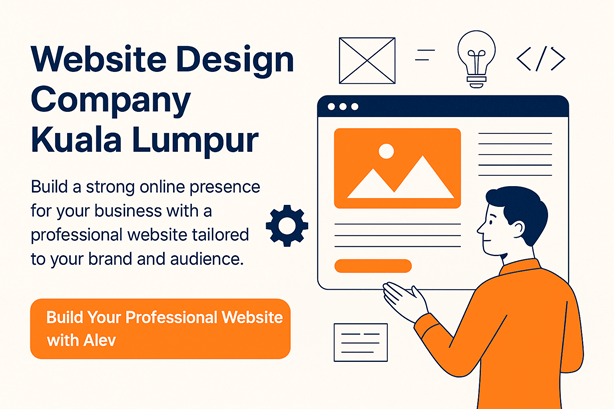Just when you think your packaging design is perfect, a few common mistakes can undermine your efforts. Your packaging is more than just a container; it’s a critical touchpoint that influences consumer perception and purchases. In this listicle, we’ll explore ten frequent packaging design missteps that you might be making and provide practical tips on how to steer clear of them. With the right insights, you’ll ensure your packaging captures attention and effectively communicates your brand identity.
Visibility Overload: The Perils of Cluttered Design
In the world of packaging design, less is often more. Cluttered packaging can overwhelm potential customers, making it difficult for them to identify your product and its benefits. When you prioritize multiple elements over clear messaging, you risk losing customer interest and brand loyalty. Simplifying your design can enhance product recognition and create a more pleasant shopping experience, ultimately influencing purchasing decisions in your favor.
The Impact of Busy Packaging on Consumer Perception
When consumers encounter busy packaging, they can feel confused and frustrated. In a crowded marketplace, your product needs to stand out, and complex designs often have the opposite effect. If your packaging seems cluttered, prospects may associate it with poor quality or lack of professionalism, leading to a negative perception of your brand. A clean, straightforward design, on the other hand, encourages trust and can foster a stronger emotional connection with your audience.
Strategies for Streamlined Design Choices
To avoid cluttered packaging, focus on simplicity and clarity in your design choices. Start by establishing a clear hierarchy of information that emphasizes the most important elements like your brand name and product benefits. Utilize whitespace effectively to guide the consumer’s eye and create space between elements. A limited color palette and consistent typography can also enhance readability and leave a lasting impression without overwhelming potential buyers.
To effectively implement streamlined design choices, begin by identifying your core message and key visuals that define your brand. Consider which elements are vital for conveying your product’s unique selling proposition and prioritize those in your design. Use contrasting colors to draw attention to important information while maintaining overall harmony. A/B testing different design iterations can help you understand what resonates best with your audience. By carefully curating the components of your packaging, you can create a more cohesive brand identity that attracts and retains customers.
The Color Conundrum: Missteps in Palette Selection
Choosing the right color palette for your packaging design is important, as it can significantly impact consumer perception and your brand’s overall success. Many designers fall into the trap of using colors that don’t align with their product, target audience, or brand message. Ensuring your color choices resonate with your brand identity and customer emotion can prevent costly mistakes and enhance the effectiveness of your packaging.
How Color Influences Brand Identity and Purchases
The colors you select for your packaging play a vital role in shaping your brand identity and influencing buying decisions. Colors evoke emotions and convey specific messages that can either attract or deter customers. For instance, blue often instills a sense of trust, while vibrant colors like red can evoke excitement and urgency. By aligning your color choices with your brand values, you can create a strong connection with your target audience, ultimately driving sales.
Best Practices for Choosing an Effective Color Scheme
To select an effective color scheme, begin by researching your target audience’s preferences and cultural associations with colors. Choose a primary color that reflects your brand’s essence and complements your product’s qualities. Consider color psychology, ensuring your palette aligns with the emotions you want to evoke. It’s also helpful to limit your palette to 2-3 main colors to maintain simplicity while creating visual harmony. Finally, test your color choices with focus groups to gather valuable feedback before finalizing your design.
Applying best practices when choosing your color scheme involves understanding both your audience and the emotions associated with different colors. Start by identifying your brand’s core values and the message you want to convey. Dig deep into consumer psychology, as colors can significantly sway purchasing decisions based on cultural perceptions. Limit your palette to ensure a clean and cohesive look that won’t overwhelm potential customers. Finally, don’t shy away from using mockups and conducting tests to see how your color choices resonate with your target demographic, allowing you to fine-tune your selection effectively.
Typography Traps: Fonts that Fail to Communicate
Choosing the wrong typography can undermine your packaging design efforts. Fonts that are difficult to read or mismatch your product’s identity can leave your customers confused and disengaged. A well-chosen typeface can convey your brand message effectively and enhance your product’s shelf appeal, while poorly chosen fonts can sabotage your aim entirely.
The Importance of Readability in Packaging Design
Readability is paramount in packaging design as it directly affects the consumer’s ability to comprehend the product information quickly. When customers are browsing through options, they should instantly understand what your product is and its benefits. If the text is unclear, they may overlook your product in favor of a competitor’s, defeating the purpose of appealing packaging.
Tips for Selecting Fonts that Enhance, Not Distract
Selecting the right font is about finding a balance between aesthetics and functionality. Here are some tips to guide you:
- Choose fonts that align with your brand’s identity.
- Ensure your font size is legible, even from a distance.
- Avoid decorative fonts for necessary information.
- Utilize contrasting colors for improved visibility.
Knowing how to combine these elements will help you create a harmonious design that communicates your message effectively.
To enhance your font selection process, consider experimenting with font pairings that complement each other while increasing readability. Serif fonts can evoke tradition and reliability, whereas sans-serif fonts often feel modern and clean. Keep your target audience in mind, and think about their preferences and expectations. Choosing two or three fonts that align with your branding can provide a polished look without overwhelming consumers.
- Limit your design to a maximum of three font styles.
- Test your choices with potential customers for feedback.
- Check for consistency across all product packaging.
Knowing your audience’s perception of typographic choices will guide you to successful design outcomes that resonate and connect with them.
Neglecting Brand Consistency: The Dangers of Fragmentation
In the competitive marketplace, brand consistency is fundamental to building trust and recognition. When your packaging design deviates from your established brand identity, it can lead to fragmentation that confuses your audience and undermines your credibility. Maintaining a cohesive appearance across all your products reinforces your branding, helping customers instantly recognize and connect with your brand.
How Mixed Messaging Can Confuse Customers
When your packaging communicates inconsistent messages, it risks alienating potential customers. Mixed messaging can arise from differing styles, colors, or even tone across your products, leading to confusion about what your brand truly represents. This inconsistency can make it harder for customers to develop a loyal relationship with your brand, as they may struggle to understand your values and offerings.
Creating a Cohesive Brand Narrative Through Design
Your packaging design should tell a unified story that aligns with your brand’s ethos and values. By employing consistent colors, fonts, and imagery across your packaging, you create a distinctive personality for your brand that resonates with your audience. This unified design approach not only enhances brand recognition but also fosters a deeper emotional connection, ultimately strengthening customer loyalty and driving sales.
To achieve a cohesive brand narrative, start by defining your brand’s core values and target audience. Consider how you want customers to perceive your brand, then let this vision guide every element of your design. This means choosing a color palette that reflects your brand’s personality, consistent typography that reinforces your message, and imagery that resonates with your audience. By weaving these elements together, you create a powerful and memorable narrative that sets you apart in the market.
Ignoring Target Audience: A Recipe for Missed Sales
Failing to consider your target audience in packaging design can lead to a disconnect between your product and potential customers, ultimately resulting in lost sales. When your packaging does not resonate with those who are most likely to buy, it can create an impression of incompatibility, making it less likely for consumers to choose your product over competitors. By understanding and addressing the preferences of your audience, you can craft packaging that not only attracts attention but also encourages purchase decisions.
Understanding Your Consumer’s Preferences and Behavior
To design effective packaging, you need to research into your consumers’ preferences and purchasing behavior. Conduct market research to gather insights into what captivates your target demographic. Pay attention to their values, interests, and lifestyle choices, as this information can guide you in creating packaging that aligns with their expectations and needs. The more you know about their motivations, the better you can tailor your designs to entice them.
Strategies for Tailoring Packaging to Audience Insights
Leveraging audience insights allows you to create packaging that speaks directly to your consumers. Start by developing personas based on your research, which will help you visualize your target audience. Use these personas to inform design elements, including color schemes, typography, and imagery, that resonate with your demographic. Additionally, test your packaging concepts with focus groups or surveys to gather feedback before finalizing your design. This iterative approach ensures that your packaging captures the attention of your intended audience and invites them to engage with your product.
Environmental Oversights: Sustainability in Design
As a designer, it’s vital to incorporate sustainability into your packaging choices. Many overlook the environmental impact of materials and production methods, leading to designs that don’t resonate with eco-conscious consumers. By educating yourself and avoiding 10 Packaging Redesign Mistakes to Avoid, you can create packaging that not only enhances your product but also contributes positively to the environment.
Why Eco-Friendly Packaging Matters to Modern Consumers
Modern consumers prioritize sustainability in their purchasing decisions. They prefer brands that demonstrate a commitment to the environment, as eco-friendly packaging fosters a positive brand image and builds customer loyalty. By using sustainable materials, you can attract environmentally conscious customers who align with your values and are willing to pay a premium for responsible products.
Alternatives and Innovations in Sustainable Materials
Gone are the days of traditional plastic; innovative materials are now available that minimize environmental impact. Options like biodegradable plastics, recycled paper, and plant-based materials not only reduce waste but also offer attractive packaging solutions. By exploring these alternatives, you will enhance your brand’s sustainability message while ensuring functionality and appeal in your designs.
Innovations in sustainable materials are rapidly evolving, offering exciting possibilities for your packaging designs. Materials like mushroom mycelium, seaweed-based films, and recycled ocean plastics have emerged as viable options, providing both functionality and environmental benefits. Additionally, advancements in technology enable more efficient production processes, reducing carbon footprints. By staying informed about these developments, you can elevate your packaging designs and effectively communicate your commitment to sustainability to your consumers.
To wrap up
Drawing together the insights from these ten common packaging design mistakes, it’s clear that avoiding them can significantly enhance your product’s appeal and effectiveness. By focusing on clear messaging, proper materials, and thoughtful design elements, you can create packaging that truly resonates with your target audience. Take the time to evaluate each aspect of your packaging, ensuring it aligns with your brand identity and communicates your values effectively. With these strategies in mind, you’ll be well-equipped to elevate your packaging design and better connect with consumers.






